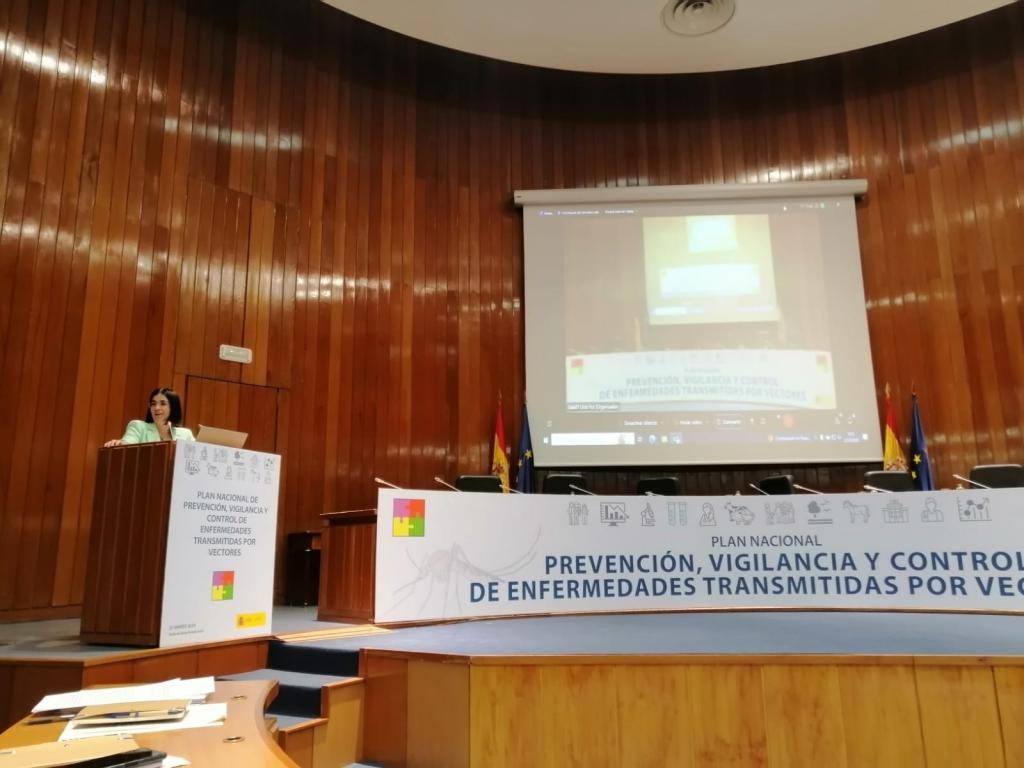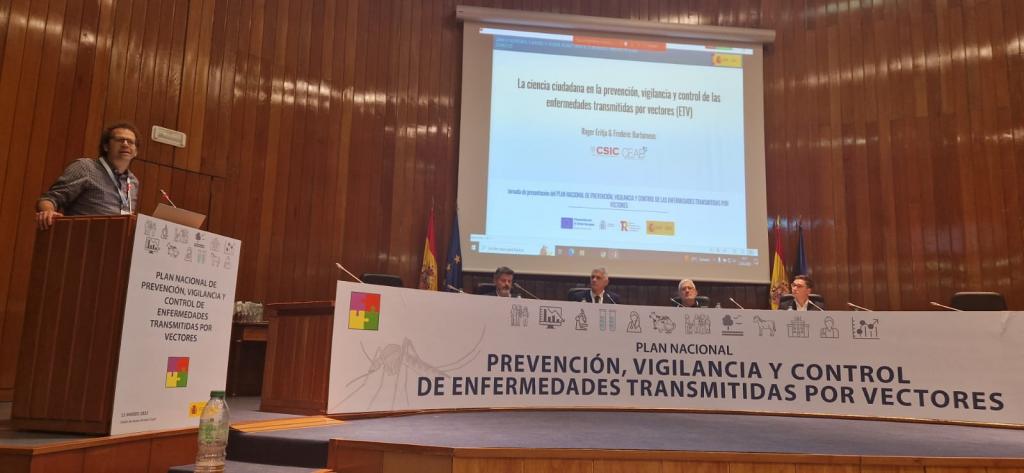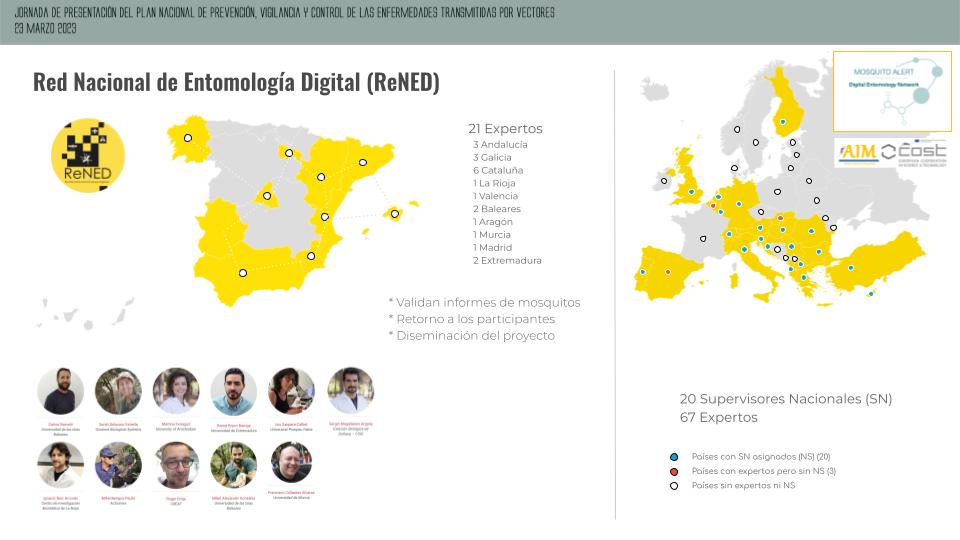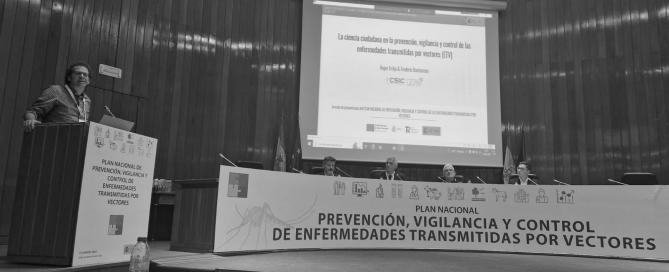On March 23, Thursday, the presentation of the National Plan for Prevention, Surveillance, and Control of Vector-borne Diseases (from Spanish, Plan Nacional de Prevención, Vigilancia y Control de Enfermedades transmitidas por Vectores), took place at the Ministry of Health headquarters in Madrid.
During the event, the former Minister of Health, Carolina Darias, highlighted the importance of this Plan in preventing and controlling mosquito-borne diseases such as dengue, malaria, and West Nile fever, considered re-emerging and emerging diseases both in Spain and globally.

Carolina Darias’ speech during the National Plan presentation
Fernando Simón, Director of the Center for Coordination of Health Alerts and Emergencies (Centro de Coordinación de Alertas y Emergencias Sanitarias -CCAES) from the Ministry of Health, opened the inaugural session and emphasized two relevant Plan elements. Firstly, the One Health approach, which considers the health of humans, animals, and ecosystems to be closely linked and interdependent, is a framework for action to prevent disease transmission. Secondly, emphasis is given to citizen science as a pioneering tool in public policies for the surveillance and early detection of invasive species.
A multidisciplinary debate
In the first session, Lucia García San Miguel, from CCAES, explained the coordination process of the National Plan with the different actors involved, indicating that in the first phase, the focus will be on diseases and risks caused by mosquitoes of the genus Culex and Aedes.
Beatriz Fernández Martínez from the Institute of Health Carlos III (ISCIII) highlighted the need to integrate information from different sources, including citizen science, to detect and control mosquitoes more effectively. One of the main clinical concerns is the general lack of knowledge about potential cases of infection of these diseases, whether autochthonous or not, due to the high proportion of asymptomatic patients and low clinical suspicion. This situation creates all the suitable conditions for the effective spread of diseases.
Citizen Science and Mosquito Alert
Frederic Bartumeus, researcher at CEAB-CSIC and co-director of Mosquito Alert, together with Roger Eritjà (CEAB-CSIC), participated in the panel on animal health, environmental health, vector management, and citizen science, with the presentation: citizen science in the prevention, surveillance, and control of vector-borne diseases (VBD).

Frederic Bartumeu’s speech during his intervention
During the presentation, it was highlighted that the ubiquity of smartphones presents a unique opportunity for mosquito surveillance. Through the Mosquito Alert app, data can be collected on mosquito bites, the breeding sites of these insects in public spaces, or photos of mosquitoes can be submitted and later analyzed and verified by the network of specialists of the National Network for Digital Entomology (from Spanish, Red Nacional de Entomología Digital- ReNED). The user receives feedback as a form of recognition for their participation.

ReNED is a community of experts in digital entomology
Bartumeus presented a successful case: in early June 2018, Mosquito Alert received a photo from Asturias of a suspicious mosquito that experts considered could be an Aedes japonicus, a Japanese mosquito. The species was not previously known to be present in Spain; its known distribution was limited to central Europe, located thousands of kilometers away from the Asturian municipality. However, field inspections confirmed species presence. Since then, citizen science has contributed to the knowledge of species distribution in Spain and Europe.
Similarly, ubiquity and broad citizen participation are the perfect combinations that make this tool a support complement to traditional entomology for detecting mosquitoes beyond their known distribution in the new National Plan.
A Plan in its first phase
The Plan includes specific measures, including the improvement of epidemiological surveillance, the implementation of vector control strategies, the promotion of research in this area, and the reinforcement of coordination among the different administrations and entities involved in the fight against these diseases.
The Plan is expected to become a useful tool for managing these diseases once the conference conclusions are incorporated.




